#roman baths museum
Text
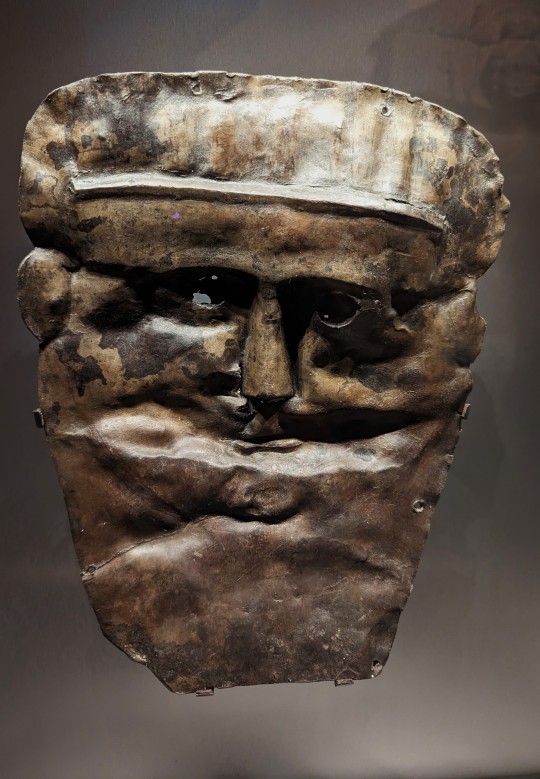
Religious Mask from Bath, England dated between the 1st and 4th Centuries on display at the Roman Baths Museum in Bath, England
Photographs taken by myself 2023
#art#archaeology#history#fashion#roman empire#england#english#ancient#iron age#roman baths museum#bath#barbucomedie
114 notes
·
View notes
Text
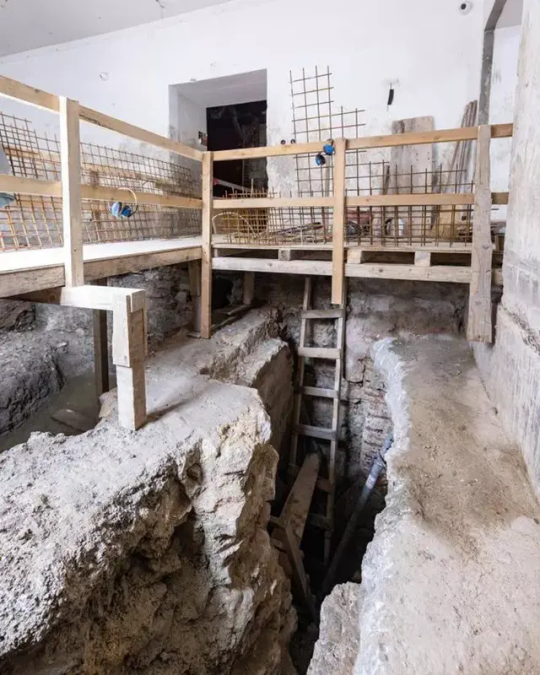

Archaeologists Discovered Large Roman Baths Under Museum in Croatia
The pool, mosaic floors and underfloor heating once formed part of Emperor Diocletian’s palace.
Archaeologists working to install a lift and restore the ground floor of Split City Museum got more than they bargained for when they unearthed sizable Roman baths underneath the building’s reception. The museum in Croatia’s second largest city was founded in 1946 and is held inside the Dominik Papalić palace—the former home of the affluent Papalić family who settled in Split during the 14th century.
The baths are in a well-preserved condition and include a pool, mosaic floors, ancient underfloor heating, an oil and grape press, and a furnace. Communal bathing was common across the Roman Empire, and baths acted as a space for relaxation and socializing.
The Split baths are believed to have been part of Diocletian’s Palace, built in the city at the end of the 3rd century for the Roman emperor’s retirement. The large fortress once spanned half of Split’s Old Town, and parts of the palace’s remains are listed UNESCO World Heritage Sites. The discovery of these Roman baths confute historians’ previous understandings about the layout of the ancient complex.
he repairs were planned as part of the “Palace of Life, City of Change” project, which is described as an “integrated program of development of the visitor infrastructure of the Old City Core with Diocletian’s palace.”


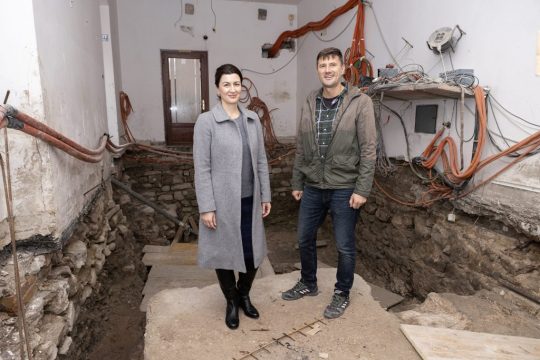
Split lies on the Adriatic Sea coast and was founded in the 3rd century B.C.E. as a Greek colony (then known as Aspálathos). Split’s landscape is made up of myriad architectural styles spanning hundreds of years, from classical ruins to Venetian Gothic structures. The director of the Split City Museum Vesna Bulić Baketić, spoke about the city’s rich architectural composition, “the fact that all of these layers of earlier buildings that once made up the city are visible inside the Split City Museum provides this museum with additional value that is exceptionally rare.”
The museum plans to open up part of the newly discovered baths to the public, once the structural integrity of the building has been ensured. The ground floor will also be restructured to celebrate the new discovery. “Showing our visitors the ‘living past’ that speaks to us through the original layers of centuries long gone adds insurmountable value and legacy to future generations,” Baketić said. “It is up to us to carry this out in the best and most professional way.”
By Verity Babbs.

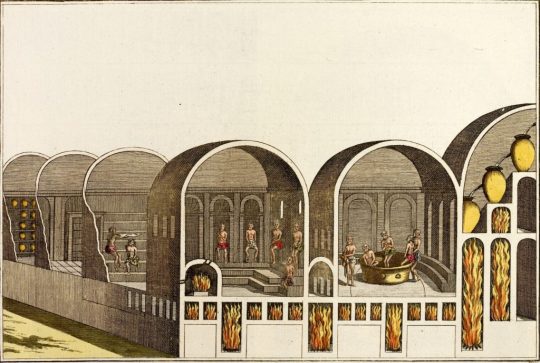


#Emperor Diocletian#Diocletian’s Palace#Archaeologists Discovered Large Roman Baths Under Museum in Croatia#Split Croatia#Split City Museum#roman baths#ancient artifacts#archeology#archeolgst#history#history news#ancient history#ancient culture#ancient civilizations#roman history#roman empire#roman emperor
41 notes
·
View notes
Text
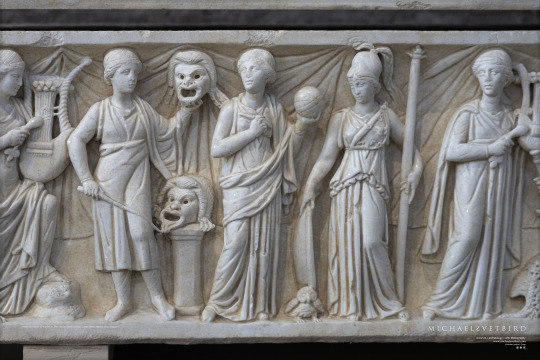





'THEATRE':
"Sarcophagus with Muses",
Roman Sarcophagus depicting Athena, Apollo and the nine Muses,
150-200 AD.
[From Isola Sacra Fiumicino, Porto necropolis near Rome, Found in 2008]
[Loan from] Museo Ostiense, Parco Archeologico di Ostia Antica | MO
• Web : https://www.ostiaantica.beniculturali.it/en/home
• FB : https://www.facebook.com/scavidiostia
• IG : @parco_archeo_ostia | @soprintendenzaspecialeroma
• X : @parcostiantica
Photographed [06|23] in Baths of Diocletian, Museo Nazionale Romano [Ground Fl., Hall I/II],
"The Instant and Eternity, Between us and the ancients" exhibition
• Web : https://museonazionaleromano.beniculturali.it/en/baths-of-diocletian
• FB : https://www.facebook.com/MNRomano
• IG : @museonazionaleromano
MO | Michael Svetbird phs©msp | 06|23 6240X4160 600 [I.-V.]
The photographed object is collection item of MO, photos are subject to copyrights.
[non commercial use | sorry for the watermarks]
Featured in Antiqvvs Magazine Summer 2023 Issue
https://www.antiqvvs-magazine.com
📸 Part of the "SARCOPHAGI:Reliefs" MSP Online Photo-gallery:
👉 D-ART:
https://www.deviantart.com/svetbird1234/gallery/69396046/sarcophagi-reliefs
👉 FB | Album:
https://www.facebook.com/media/set/?set=a.843393602695885&type=3
.
#rome#ostia#ostia antica#archaeological museum#baths of diocletian#museo nazionale romano#roman#sarcophagus#sarcophagi#reliefs#sculpture#ancient rome#ancient art#antiquity#archaeology#mythology#ancient#heritage#museology#athena#apollo#muses#μουσες#art history#antiquities#photo gallery#archaeology photography#sculpture photography#museum photography#michaelsvetbird
15 notes
·
View notes
Photo

Today’s Flickr photo with the most hits: the Roman Baths Museum at Hierapolis, Pamukkale, Turkey
2 notes
·
View notes
Text




Thermenmuseum, Heerlen
This museum is built around the best preserved Roman baths in the Netherlands. It is quite difficult to photograph the ruins but I hope that you get an idea how it is. The museum is going to get a renovation very soon.
The stone female head was found by a Roman villa near by the baths.
#Thermenmuseum#roman archaeology#the Netherlands#roman baths#visiting museums#light academia#dark academia
0 notes
Text
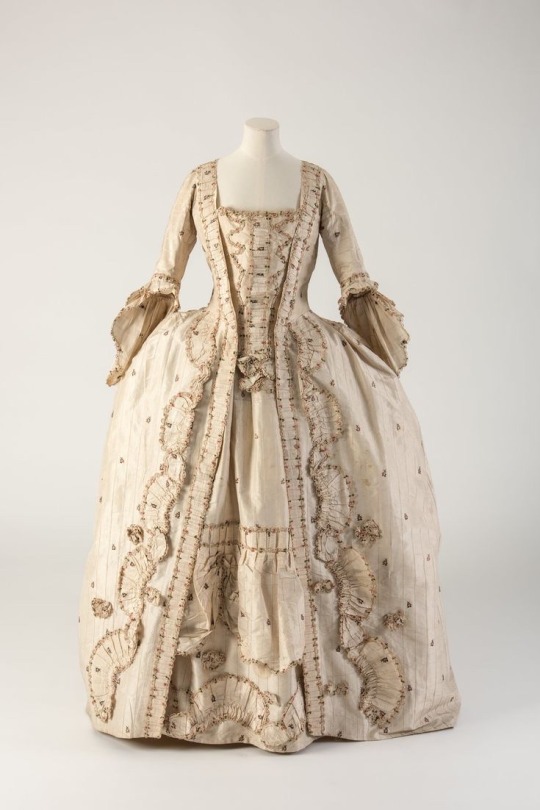
#historical fashion#fashion#historical#history#historical clothing#historical dress#long dress#textiles#textile#dress#dresses#gown#ball gown#old fashioned#18th century art#18th century fashion#1700s fashion
97 notes
·
View notes
Text
Discovery of bronzes rewrites Italy's Etruscan-Roman history

Italian authorities on Tuesday announced the extraordinary discovery of 2,000-year-old bronze statues in an ancient Tuscan thermal spring and said the find will "rewrite history" about the transition from the Etruscan civilization to the Roman Empire.
The discovery, in the sacred baths of the San Casciano dei Bagni archaeological dig near Siena, is one of the most significant ever in the Mediterranean and certainly the most important since the 1972 underwater discovery of the famed Riace bronze warriors, said Massimo Osanna, the Culture Ministry's director of museums.
Thanks to the mud that protected them, the two-dozen figurines and other bronze objects were found in a perfect state of conservation, bearing delicate facial features, inscriptions and rippled tunics. Alongside the figures were 5,000 coins in gold, silver and bronze, the ministry said. Read more.
2K notes
·
View notes
Text
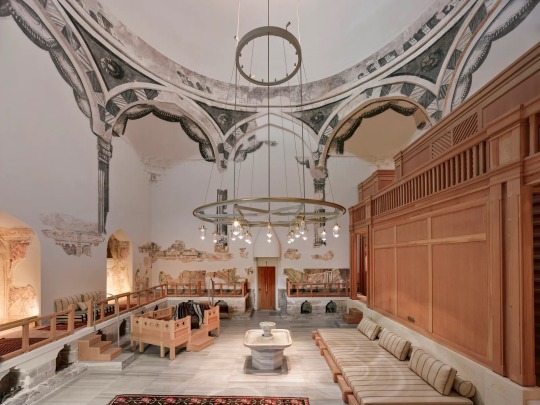
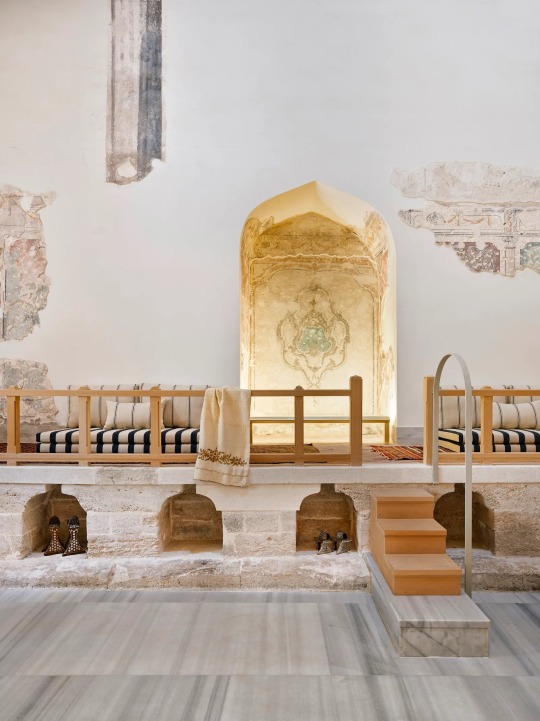

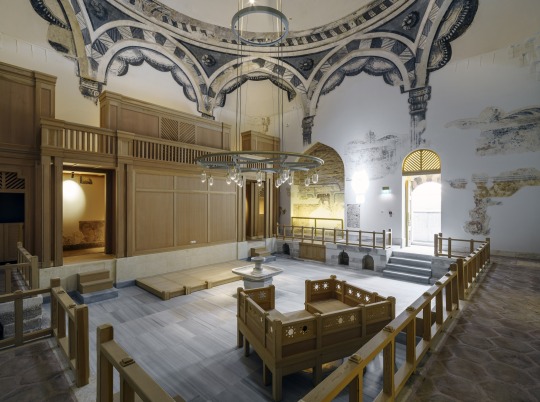
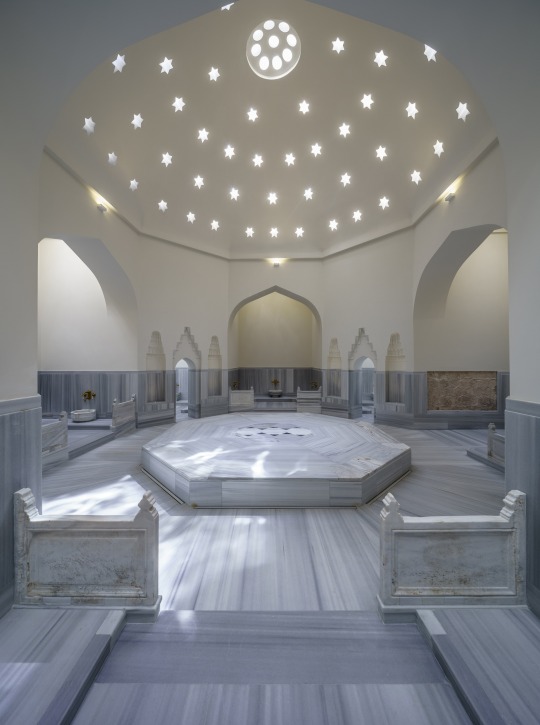
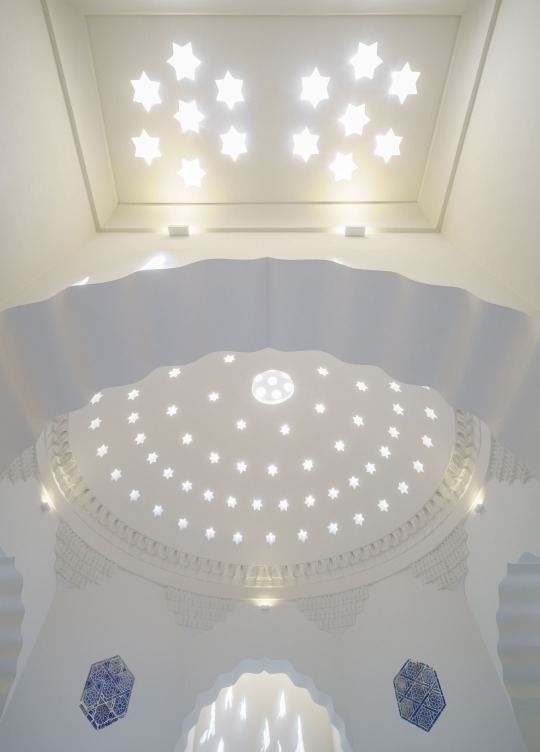

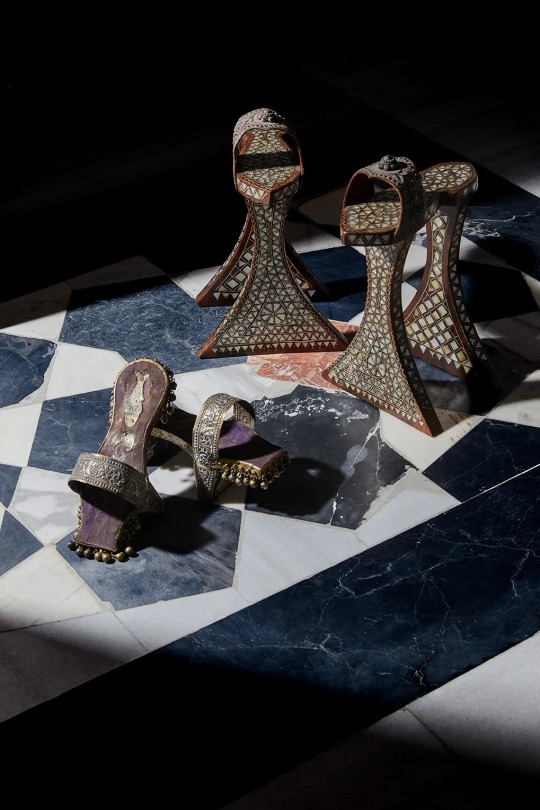
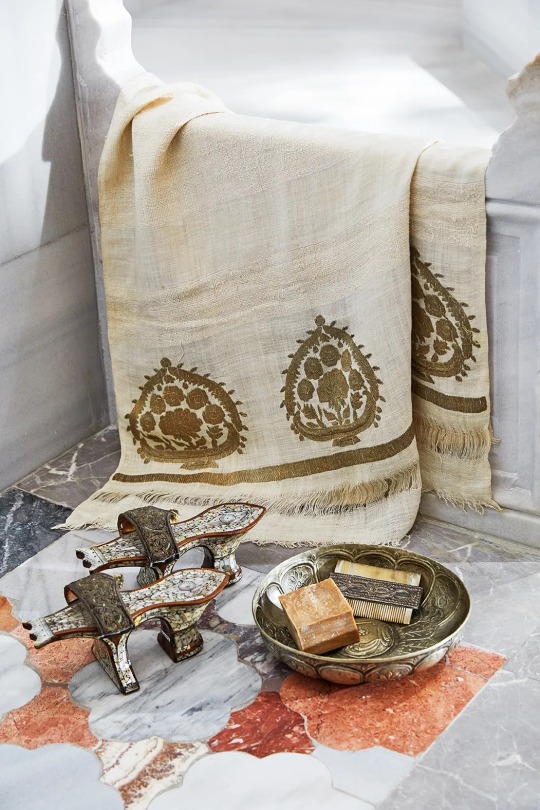

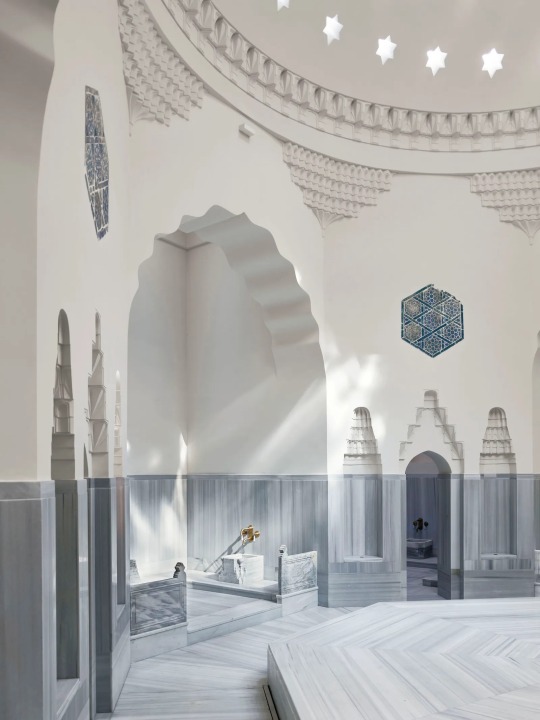
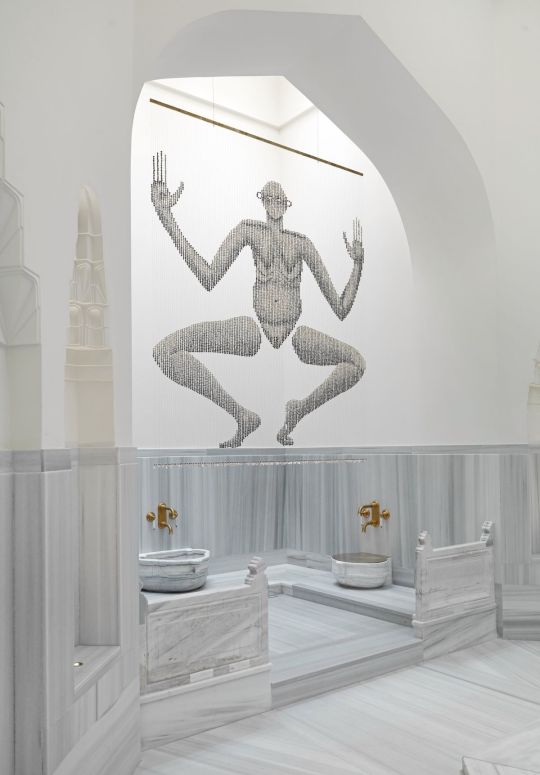
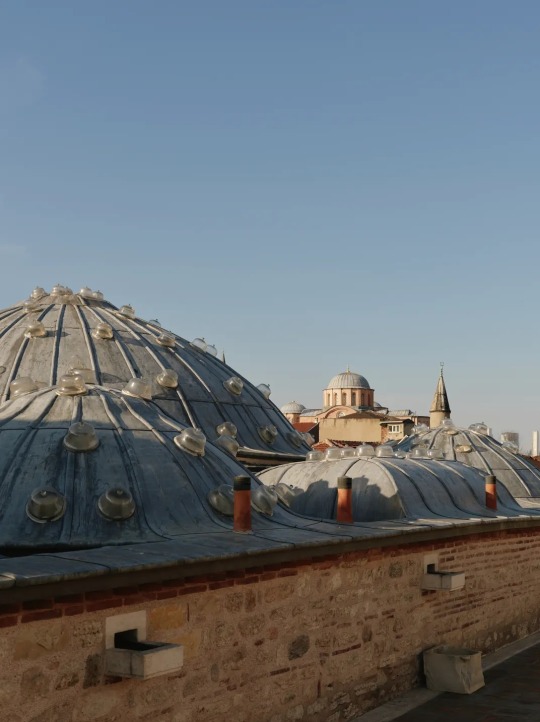
Zeyrek Çinili Hamam, Istanbul, Türkiye,
In Turkish, “çinili” translates to “tiled bath house.”
Mrs Koza Gureli Yazgan acquired an abandoned hamam in Istanbul’s historic yet overlooked Zeyrek district in 2010.
While freshening the place up, she kept unearthing priceless artifacts from Ottoman, Byzantine, and Roman times, soon discovering fragments of more than 3,000 vivid turquoise-blue ceramic tiles. More than 10,000 such tiles once adorned the building’s interior until a Parisian dealer sold the tiles to museums and private collectors around Europe as the hamam sat dormant.
After more than 13 years of conservation, which involved restoring the tiles and wall paintings dating back to the 18th and 19th centuries, Mrs Gureli Yazgan is gearing up to reopen Çinili as a contemporary art venue on September 30.
A museum dedicated to Byzantine cisterns will occupy the lower levels, which feature newly uncovered wall carvings of boats suspected to have been made by slaves. When the baths aren’t offering full-service spa services, they’ll host a rotating art program that glimmers under the domed roof’s array of crescent-shaped skylights.
#art#design#architecture#minimal#interior design#interiors#hammam#turkey#istambul#gureli yazgan#cinilli#renovation#wellness#health and wellness#byzantine#ottoman#zeyrek#traditions#art venue#art space#citerns#museum
208 notes
·
View notes
Text
Barefoot Divinity - an intriguing art historical detail in The Sandman

I was rewatching The Sandman episode "Calliope" and I noticed an interesting detail: when Calliope is led away from Erasmus Fry's house, she is barefoot.
There's plenty of thematic reasons to do this within the story, as she's an otherworldly being who would not be harmed by going barefoot, and because she is, at this point, a prisoner. One could argue that the reason for this choice is simply because she has not been allowed the dignity of shoes and it is an effective way of controlling peoples' movements to deny them shoes.
But to put on my ancient art history TA hat for a moment here, there's another possible reason for the choice to show Calliope barefoot.
What makes it such an interesting detail in particular is that showing Calliope barefoot is accurate to ancient Greek and Roman art: only the gods are depicted barefoot.
In fact, it's such a consistent rule that it's often a quick way when looking at ancient Greco-Roman sculptures (of certain eras) to know whether or not the figure the statue depicts is meant to be a god or a mortal. If the figure depicted is otherwise fully dressed (ie, it's not a bathing scene or some other deliberately nude subject matter) but they still have no shoes, that means they are a god.
This rule was so strict when it came to portraiture in particular that it took on political significance in the Julio-Claudian era of Ancient Rome. Romans were constantly suspicious of their early emperors like Augustus aspiring to become god-kings in the style of their (barbaric, to Roman minds) eastern counterparts, as Romans considered the allure of being declared divine to be understandable but anathema to their own comfortable fiction that the Emperor was a Princeps, first citizen, and not a king. So when this statue was commissioned by Emperor Augustus's widow, Livia:

It was incredibly politically controversial because she was saying, in essence, that Emperor Augustus was a god.
Now, this particular statue barely squeaked by the censors, so to speak, because the Romans believed everyone had a "genius" or divine spark within them. The claim was that this wasn't a statue of Augustus declaring him a deity but rather a statue depicting his divine spark which could be portrayed as a barefoot god, now that he was dead.
Still, it was a statue viewed with a great deal of suspicion at the time as a result of this splitting of hairs. Next time you go through the Greco-Roman statue portion of a museum that contains full body statues, check out which ones are barefoot! Oftentimes, there is a political message mixed in to that effect. For example, with otherwise naked generals (in a style referred to as "heroic nudity", often used for mythological heroes or athletes) being shown still wearing sandals, to signal they are still modest enough to be depicted as humans, not gods.
The thing is, Calliope is not the only time in The Sandman comics that a godlike being is depicted as barefoot at an otherwise unusual time, specifically in a Greco-Roman context. For example,

After this event in Brief Lives, Dream is shown leaving the temple walking barefoot on the ground. Dream is also named as the Roman god Morpheus, who the Romans would therefore have no issue with being portrayed barefoot.
And much more interestingly, he is throughout the Brief Lives arc frequently and unusually shown barefoot even when wearing modern clothes:

It is this frequent portrayal of Morpheus without shoes on that leads me to believe the choice is deliberate on @neil-gaiman's part, not merely as a depiction of vulnerability but rather as a nod to ancient art history visual language, as is so frequently done throughout The Sandman comics and his other works: modernizing the ancient and bringing the mythological into our world.
426 notes
·
View notes
Text
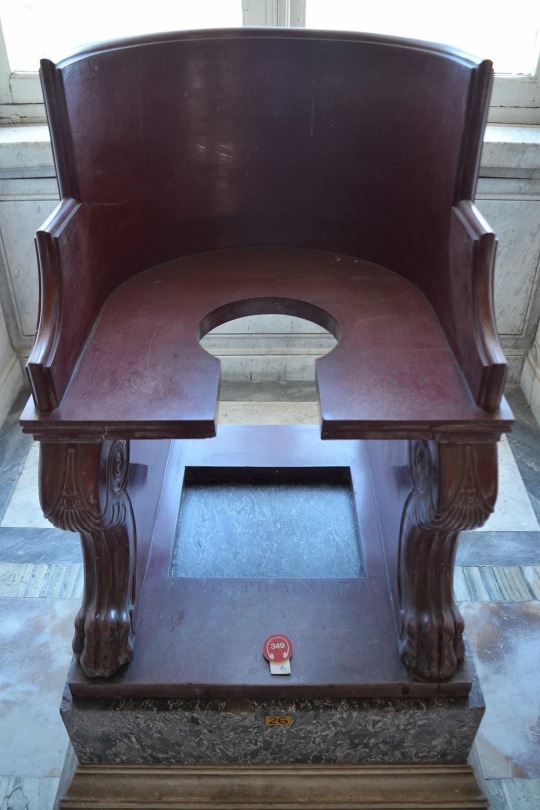

#WorldToiletDay🚽
Roman toilet seat in rosso antico (red marble from southern Greece), formerly in the Lateran Palace. Vatican Museums, Rome.
The well-preserved latrines in the Baths of the Laberii at Uthina (Tunisia) contain seven-seat latrines inserted in niches and adorned with marble revetments.
99 notes
·
View notes
Text

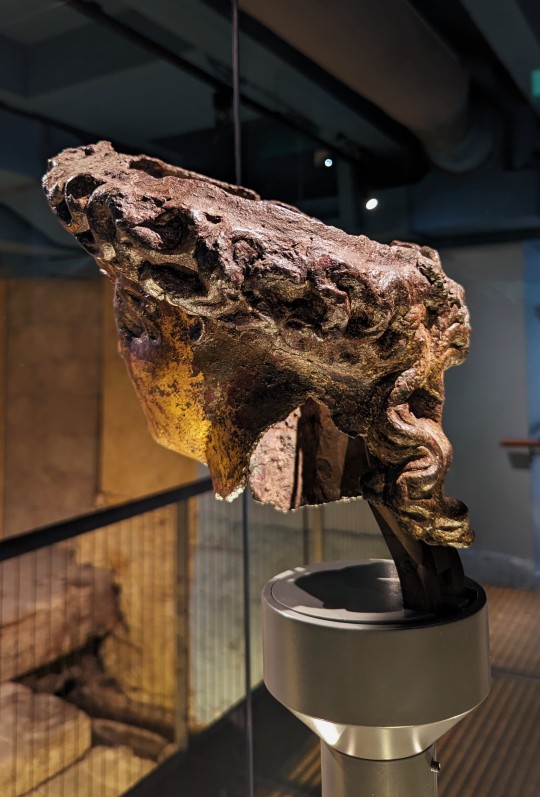
Bronze Head of Sulis Minerva from the Bath, England dated to the Late 1st Century on display at the Roman Baths Museum in Bath, England
This bronze head was discovered in 1727 and was an early indication that the Roman site at Bath was not a typical settlement. Gilt bronze sculptures are rare finds from Roman Britain as only two other fragments are known.
The head is probably from the cult statue of the goddess which would have stood within her Temple beside the Sacred Spring. From there she may have looked out across the Temple courtyard to the site of the great altar, the site of sacrifice, which stood at the heart of that sacred space. The statue may well be an original object from the foundation of the site in the later first century CE, which means that it was probably well over 300 years old when it met its demise.
The head is slightly larger than life size, suggesting that the original statue was an imposing sight. Hidden in the hair line are several small holes which once held rivets that fixed her tall Corinthian helmet to her head.
Examination of the head has revealed that it has six layers of gilding. The first two use a technique known as fire gilding whilst the four later layers are applied as gold leaf. The head has a number of imperfections. There is corrosion which has affected it in parts where it lay in the ground for over a thousand years. There is also a strange rectangular cut beneath the chin. It is thought that this may result from a flaw in the original casting process in which a bubble on the surface may have been cut out and filled with an inserted plate. When gilded over it would not have been visible. This plate has subsequently fallen out as a result of corrosion whilst in the ground.
Photographs taken by myself 2023
#art#archaeology#history#roman empire#english#england#ancient#iron age#roman baths museum#bath#barbucomedie
105 notes
·
View notes
Photo

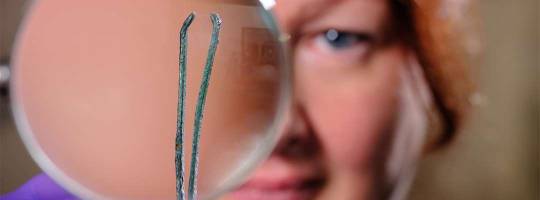



Archaeologists Unearthed Dozens of Roman Tweezers in Britain
Archaeologists have unearthed dozens of Roman tweezers in Britain, revealing the ancient culture’s obsession with hairlessness.
The collection has now gone on display in a new museum at Wroxeter Roman City, which in its prime would have been as large a settlement as Pompeii.
The simple tools would have been used not only for plucking eyebrows but for removing any unwanted hair – including in armpits.
The tweezers are part of a wider exhibition of more than 400 artifacts which illustrates the Romans’ preoccupation with cleanliness and aesthetic beauty.
Among the other items on show are a strigil (skin scraper), perfume bottles, jet and bone jewelery, make-up applicators and amulets for warding off evil.
English Heritage, which runs the museum in Shropshire, revealed the find on its website.
Cameron Moffett, English Heritage curator at Wroxeter Roman City, said online that the find was one of the largest of its kind in Britain, indicating that tweezers were a “popular accessory.”
“The advantage of the tweezer was that it was safe, simple and cheap, but unfortunately not pain free,” he said.
The Romans greatly valued personal hygiene, attending communal baths daily. Many people would have had their own personal cleaning sets, including an ear scoop, nail cleaner and tweezers.
Usually associated with eyebrow shaping today, tweezers would have been used for general hair removal, including to pluck armpit hair, said English Heritage.
“It may come as a surprise to some that in Roman Britain the removal of body hair was as common with men as it was with women,” said Moffett.
“Particularly for sports like wrestling, there was a social expectation that men engaging in exercise that required minimal clothing would have prepared themselves by removing all their visible body hair.
Often performed by slaves, hair removal could be very painful. According to English Heritage, Roman author and politician Seneca complained about the noise at the baths in a letter, saying “the skinny armpit hair-plucker whose cries are shrill, so as to draw people’s attention, and never stop, except when he is doing his job and making someone else shriek for him.”
Wroxeter Roman City, or Viriconium Cornoviorum as it was known, is one of the best preserved Roman towns in Britain.
Previous excavations have uncovered the forum, the market, the bath house, a large hall known as the bath-house basilica and the town houses of wealthy residents.
By Lianne Kolirin.
#Archaeologists Unearthed Dozens of Roman Tweezers in Britain#Wroxeter Roman City#Viriconium Cornoviorum#ancient artifacts#archeology#archeolgst#history#history news#ancient history#ancient culture#ancient civilizations#roman history#roman empire
816 notes
·
View notes
Text


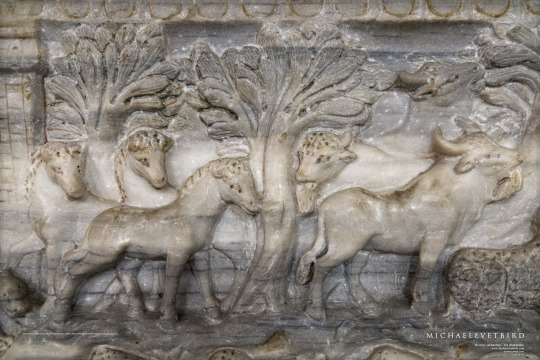
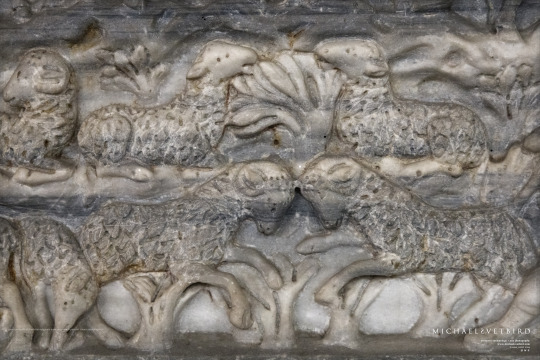
'NATURE':
"Gigantic Sarcophagus With Pastoral Scenes",
Roman,
Ca 270 AD.
[From the area near the Thermae of Caracalla, Rome]
"The dedication is placed to Iulius Achilleus by his wife.
Achilleus had been conferred the title of vir perfectissimus, and was a person in charge of an office in the imperial chancellery [proximus a memoriae] and after he went on to become super-intendant [procurator] of the gladiatorial barracks of Rome [Ludus Magnus]."
[txt ©Epigraphic Museum, BOD MNR]
Epigraphic Museum at Baths of Diocletian, Museo Nazionale Romano | BOD MNR
• Web : https://museonazionaleromano.beniculturali.it/en/baths-of-diocletian
• FB : https://www.facebook.com/MNRomano
• IG : @museonazionaleromano
BOD MNR | Michael Svetbird phs©msp | 06|23 6240X4160 600 [I.-IV.]
The photographed object is collection item of BOD MNR, photos are subject to copyrights.
[non commercial use | sorry for the watermarks]
Featured in Antiqvvs Magazine Summer 2023 Issue
https://www.antiqvvs-magazine.com
📸 Part of the "SARCOPHAGI:Reliefs" MSP Online Photo-gallery:
👉 D-ART:
https://www.deviantart.com/svetbird1234/gallery/69396046/sarcophagi-reliefs
👉 FB | Album:
https://www.facebook.com/media/set/?set=a.843393602695885&type=3
.
#rome#baths of diocletian#epigraphic#museum#archaeological museum#museo nazionale romano#roman#sarcophagus#sarcophagi#reliefs#frieze#sculpture#ancient sculpture#ancient rome#ancient art#antiquity#archaeology#ancient#heritage#museology#art history#antiquities#mythology#photo gallery#photography#sculpture photography#art photography#archaeology photography#museum photography#michaelsvetbird
2 notes
·
View notes
Text







Lamezia Terme, Calabria, Italy
Lamezia Terme is located on the eastern border of the coastal plain commonly called Piana di Sant'Eufemia, which was created by drying a wide marshy area. It is the third largest city in Calabria by number of inhabitants and has a relatively recent history.
Established in 1968 from the fusion of three pre-existing towns: Nicastro, Sambiase, and Sant'Eufemia Lamezia, it is not only an important regional and national hub due to its strategic location in the centre of the region, but also a crucial business hub for the region's economy. These three towns have contributed to the city's diverse cultural heritage and historical significance.
Lamezia Terme is most famous for its international airport which is situated a few kilometres outside the town.
The Baths of Charon

Despite its modern origins, the name is much older: it derives from the first political community attested on this territory, the Lametìnoi, dating back to protohistoric times.
The Baths, on the other hand, refers to one of the main resources of the area, the Terme di Caronte, known since Roman times as Aque Angae. These four springs are located on the slopes of the Reventino mountain massif and, combined with the current of the Bagni river, give rise to different degrees of temperature: the highest reaches 39°C, hence the name Charon.

The secrets of ancient Terina
The first human settlements in what is now modern Lamezia Terme were discovered in 1865, when jewellery was found in the area of Sant'Eufemia Vetere, which was later sold to the British Museum in London, which still preserves it today.
This discovery, known as the Treasure of St Euphemia, was the first in a long series, which during the 20th century confirmed the ancient settlement of Terina. It was not until 1997, however, that it was decided to initiate a systematic search that identified a well-structured urban layout, of which we now know a living quarter built with parallel axes that define a regular urban grid. According to the most widely accepted hypothesis, this would be the extension of a pre-existing structure dating back to the 5th century BC.
Two rooms of the Lametino Archaeological Museum are dedicated to ancient Terina. Lametino Archaeological Museum housed in the Monumental Complex of San Domenico. Divided into three sections: Prehistoric, Classical and Medieval, will give you an insight into the history of this area, from the earliest times. There is, for instance, a hydria, which is a vase, dated between 380 and 370 BC, as well as everyday objects.

The ruins of the medieval castle
There is still much to discover in Lamezia Terme, especially in the historic city centre. On Hill of San Teodoro, stands the Norman castle of Nicastro about whose origins there is some dispute. Built on the hillside, a unique strategic position to control the surrounding plain all the way to the sea, according to some dates back to Byzantine era, according to others Svevo-Normana.
All that remains of the original structure are four towers, the ramparts, walls and a buttress with a small loggia; the earthquake of 1638 caused great damage to the structure, but at the same time contributed to the legends that populate it.
Photos by Pino Elia
Follow us on Instagram, @calabria_mediterranea
#lamezia terme#calabria#italy#italia#south italy#southern italy#mediterranean#italian#mediterranean sea#seascape#sea#europe#landscape#italian landscape#buildings#cityscape#city#town#architecture#building#people#flowers#lamezia#lameziaterme#history#greek#magna graecia#magna grecia#baths#greek art
33 notes
·
View notes
Text

[ID: A photo of the fountain in the Piazza Della Cinque Scole, featuring a gorgon head on the fountain, water visibly falling, and a bird perched on the rim, bathing and getting a sip of water.]
Okay, well, Piazza Della Cinque Scole is a lot more complex than I anticipated when my dumb ass walked into it looking for a place to eat a macaroon.
I didn't know when I booked my room that I was on the edge of the historic Roman Jewish ghetto, but when I found out later, I did somewhat plan a day around it. The idea was to go to the kosher bakery I'd heard was really good for breakfast, then stroll up to the Great Synagogue of Rome and do the museum and synagogue tour, and I have reservations for a late lunch at a historic local restaurant to try the Jewish fried artichokes (and obviously also now the Grandpa Balls, for those who saw the earlier post). I had wanted to attend Kabbalat Shabbos on Friday, but I got into Rome far too late, unfortunately.
What I didn't expect when I walked into the Museuo Ebraico di Roma this morning was for the first placard I read to explain to me that the Cinque Scole were the five distinct cultures of Judaism that one of the Popes crowded into the ghetto and furthermore that eventually they all were housed in one building, because all the Jews of Rome were only allowed one place of worship. So that's simultaneously even more awesome in re: imagine the shouting, and also an unavoidable and terrible aspect of the persecution of Jews in Europe. But yeah, it turns out the little plaza where I ate breakfast is hugely historically important to Roman Jewish history.
Good start to the day, actually; a lot of my most meaningful encounters with Judaism come from coincidence, which is the kind of chaos I just live in. And then I got to see the Great Synagogue, which certainly is a lot. It's a gorgeous building inside and out, but our tour guide told us that it was designed by gentiles because the Jews had no architects at the time (probably to do with being forbidden to own their own houses) so it's very, uh, unusual. It seems to be (both visually and from the tour guide's speech) that the architects basically said "Let's make a church that's, you know....exotic," and the result is a very pretty synagogue that looks like it's also a basilica and an art deco hotel lobby, all at the same time.
I have a couple of minutes before lunch reservation so I thought I'd come home and drop off the souvenirs I bought; getting to the restaurant should be fairly easy if I take the alleys instead of the main streets as planned. This whole area is basically wide alleys that occasionally open into interesting courtyards, but aside from some areas that are barricaded off from cars, they're also city streets -- cars and motorcycles drive through them all the time, and it will be a miracle if I get out of Rome without getting pasted into a wall by a Fiat. (Most of the cars on these alley-streets are Mini Coopers and I figure if a Mini Cooper tries me I can just kick it onto its side.)
I found a super cool Jewish antique store near the museum, so I bought a lovely almond-blossom brooch for Mum for mother's day and a khamsa bracelet for myself, and also a fidget ring inscribed in Hebrew that I'm pretty sure has the traveler's prayer on it but I'm going to need to check next time I've got Sefaria open.
261 notes
·
View notes
Text

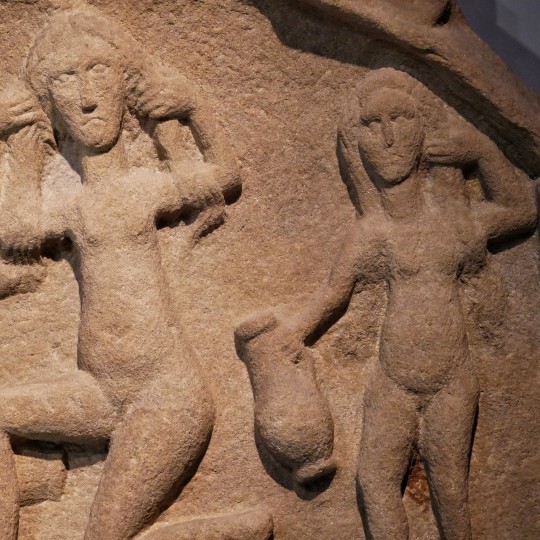

Roman Relief From A Water Tank Depicting Venus Bathing With Attendants, Great North Museum, Hancock, Newcastle upon Tyne
#roman#roman living#roman goddess#romans#roman art#roman belief#roman design#stone carving#archaeology#relic#ritual#roman culture#ancient craft#ancient living#ancient cultures#Newcastle
48 notes
·
View notes